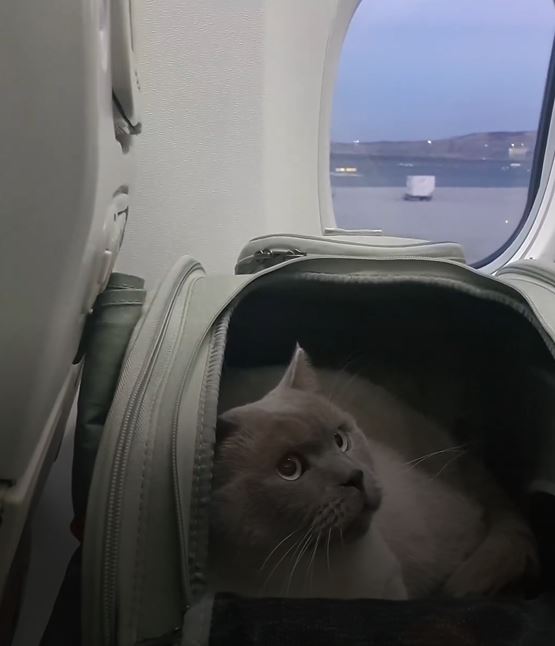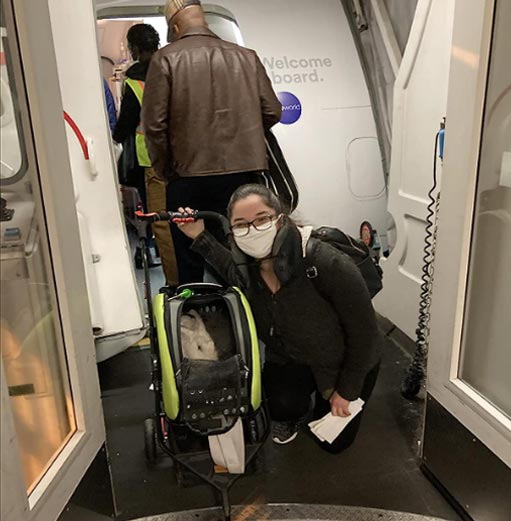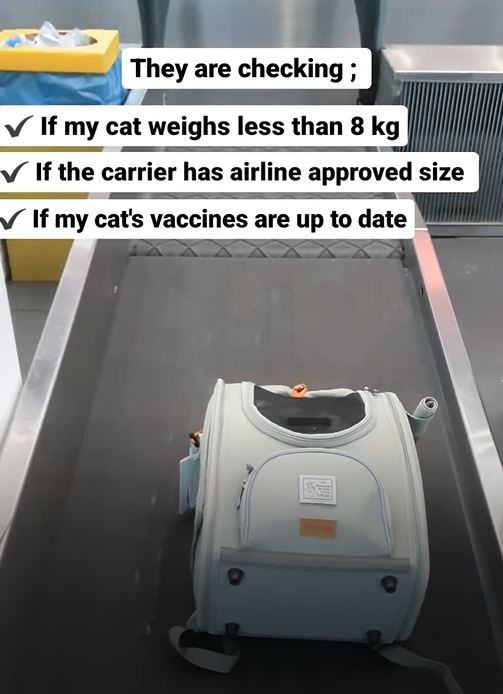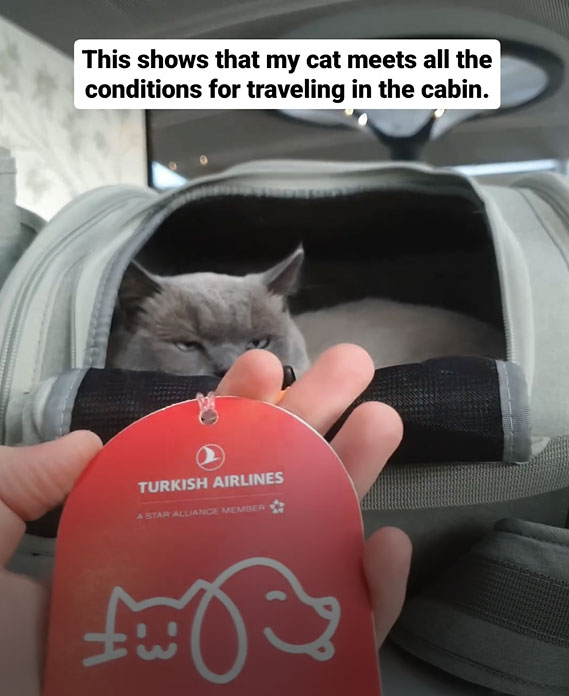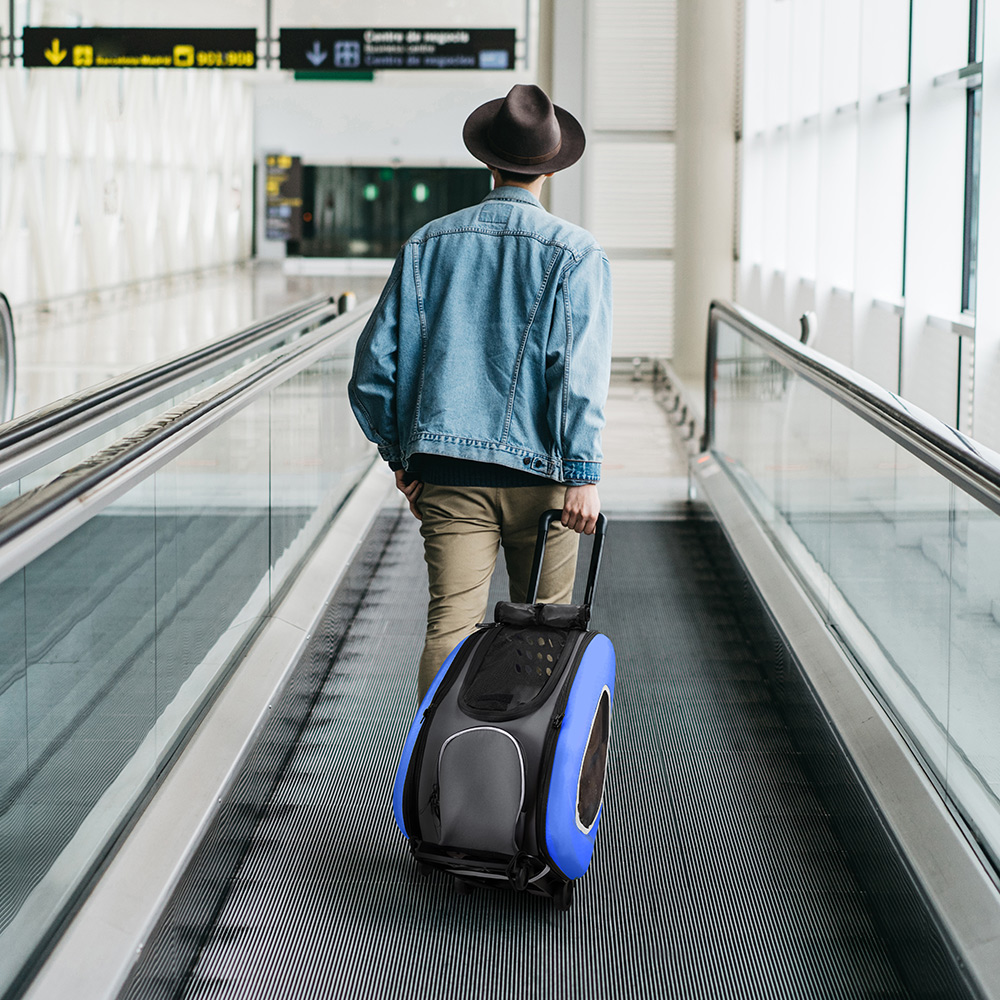Yes, you may usually take your cat with you in the cabin of a flight, but there are certain rules and procedures to follow.
Here is a rough outline of the actions you should take:
1. What are the standard airline policies for boarding with cats?
Pet travel guidelines and regulations vary by airline. Each have their own rules, costs, and paperwork requirements. Many international airlines accept small pets, cats, small breed dogs and birds in the cabin, while large dogs are required to go in the cargo.
- Federal laws demand that pets be at least 8 weeks old and weaned at least 5 days before flying.
- Inform the airline in advance that you will be flying with a cat. Most airlines require you to make a reservation for your pet, and others limit the number of pets allowed on each trip.
- Come at the airport ahead of schedule to enable time for the check-in process. Certain airlines may have special check-in counters or regulations for travelers flying with pets.
- While the entire trip, your cat have to stay in the pet carrier and be stored under the seat in front of you. You can’t get your cat out of the airline approved cat carrier while the aircraft is in transit.
- Airline companies allowed only one cat per pet carrier.
- Every airline charges a price for bringing a pet on board. The charge varies based on the airline and location. Airlines usually charge a fee for cats traveling in the cabin with their owners. This fee can range from $50 to $250 per one-way trip, depending on the airline.
2. What is the Best Airline Approved Cat Carrier for International Flight?
If your cat is permitted in the cabin, bring an airline-approved pet carrier. The the cat carrier must fulfill dimension specifications, have enough ventilation, have a pee pad and escape proof.
Here are the common requirements for a cat carrier:
- Weight: Airlines usually have weight restrictions for pet carriers and pets combined. The weight limit typically ranges from 15-20 pounds (7-9 kg) total.
- Dimensions: The carrier should typically not exceed a certain size to fit under the seat in front of you. Common dimensions for cabin pet carriers are around 17-19 inches (43-48 cm) in length, 11-12 inches (28-30 cm) in width, and 10-12 inches (25-30 cm) in height.
- Structure: The carrier should be sturdy, well-ventilated, and leak-proof. Soft-sided carriers are often preferred for cabin travel as they can fit more easily under the seat.
3. What paperwork do I need to fly with a cat?
The majority of airlines additionally demand a Certificate of Veterinary Inspection (health certificate) dated within 10 days of travel.
Pets flying by air often need a health certificate given by a professional veterinarian. This certificate often indicates that the pet is in good health, free of infectious illnesses, and up to date on vaccines. The health certificate is often issued within a set duration before to travel, such as within 10 days of the trip.
Proof of up-to-date vaccinations, such as rabies vaccination certificates, may be required by airlines and destination countries.
Few airlines may be required to get import/export permissions or certifications from the destination country’s appropriate authorities.
4. How do you take a cat through airport security?
When passing through x-ray security, you’ll need to remove your cat from the carrier and carry them through the metal detector while the enclosed cat carrier passes through the X-ray machine. Prepare to handle your cat softly throughout this procedure.
Make sure your cat has proper identification, including a collar with an ID tag. Bring any required documentation, such as a recent health certificate, vaccination records, or any paperwork mandated by the airline or destination.
In-travel Comfort: Make sure your cat is comfortable throughout the travel. Insert familiar objects, such as a cat toys and cat treat into the airline approved cat carrier. There is an article for top 10 cat treat from this website that you can use to gain more knowledge about traveling with cat.
5. Can a cat sit on people’s lap during a flight?
The ability to have your cat sit on your lap during a flight depends on the airline’s specific policies and regulations. In general, most airlines require pets to be secured in an airline-approved carrier during the flight, and the cat carrier is usually placed under the seat in front of you.
Allowing a cat to sit on your lap without a enclosed cat carrier may not be permitted for safety reasons, as it could be disruptive and pose a risk to both the cat and other passengers. Additionally, it is important for the cat to be secured in case of unexpected turbulence or other in-flight situations.
Conclusion
Be respectful to other travelers. Keep your cat quiet and relaxed throughout the journey. Avoid taking them out of the cat carrier throughout the voyage to avoid disturbance both from cat lover and cat hater.
